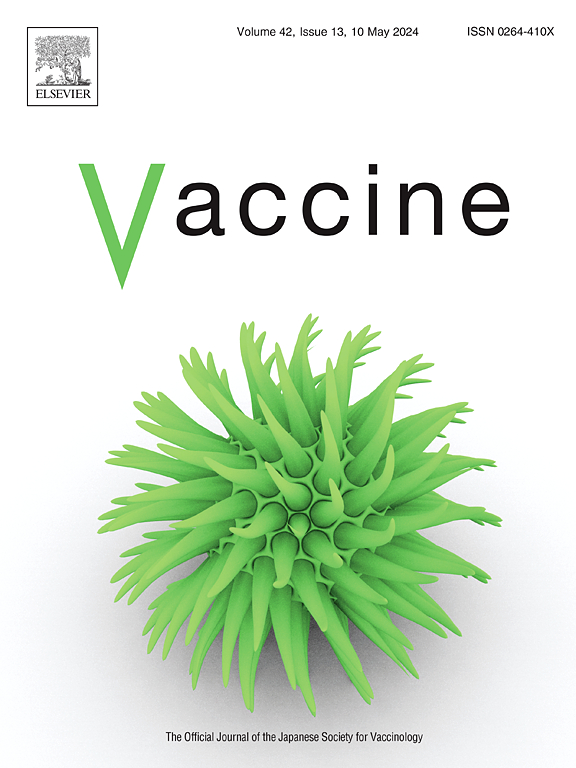Changes in the Streptococcus pneumoniae population responsible for invasive disease of young children after the implementation of conjugated vaccines in the National Immunization Program in Poland
IF 4.5
3区 医学
Q2 IMMUNOLOGY
引用次数: 0
Abstract
Background
In Poland, 10-valent pneumococcal conjugate vaccine (PCV10) was added to the National Immunization Program (NIP) in 2017. We aimed to investigate the population structure and genomic composition of pneumococcal strains responsible for invasive infections in young children before and after the introduction of PCV10 to the NIP.
Methods
The study encompassed all laboratory-confirmed cases of invasive pneumococcal disease between 2014 and 2020 in Polish children under the age of two. This period was split into two phases: the pre-PCV period (2014–2016) and the post-PCV period (2017–2020). Standard methods were utilized for identifying, serotyping, and testing the antimicrobial susceptibility of the isolates. All S. pneumoniae isolates underwent whole genome sequencing and analysis.
Results
Following the introduction of PCV10, the prevalence of PCV10 vaccine-type (PCV10-VT) strains decreased significantly from 56.9 % to 29.5 %. Concurrently, the additional three serotypes present in higher valency PCVs (3, 6A and 19A), increased from 17.6 % to 25.7 %, and non-vaccine serotypes from 12.8 % to 22.9 %. A significant decline was observed in resistance to penicillin (49.0 %–34.3 %), and erythromycin (55.9 %–41.9 %), in the percentage of multidrug-resistant (46.1 %–30.5 %), and pilliated isolates (50.0 %–28.6 %). In the pre-PCV period, Global Pneumococcal Sequence Cluster (GPSC), GPSC1 was the most prevalent (17.6 %), and in the post-PCV period GPSC12 emerged as the most common (10.5 %). Changes in the GPSC composition within particular serotypes (e.g. 14 and 19A) were also observed.
Conclusions
In the first three years after the introduction of the PCV10 into the Polish NIP significant reduction in the prevalence of PCV10-VTs was observed. Molecular characterization of the studied population allowed us to link the observed changes in the GPSC prevalence, with a decrease of infections caused by multi-drug resistant pneumococci and those with higher virulence associated with the presence of pili. The consistent evolution of S. pneumoniae influenced by population-based vaccinations, requires continuous surveillance.
在波兰国家免疫规划中实施结合疫苗后,导致幼儿侵袭性疾病的肺炎链球菌种群的变化。
背景:波兰于2017年将10价肺炎球菌结合疫苗(PCV10)纳入国家免疫规划(NIP)。我们的目的是研究在将PCV10引入NIP之前和之后导致幼儿侵袭性感染的肺炎球菌菌株的种群结构和基因组组成。方法:该研究包括2014年至2020年期间波兰两岁以下儿童中所有实验室确诊的侵袭性肺炎球菌病病例。这一时期分为两个阶段:前pcv时期(2014-2016)和后pcv时期(2017-2020)。采用标准方法对分离株进行鉴定、血清分型和药敏试验。所有肺炎链球菌分离株均进行全基因组测序和分析。结果:引入PCV10后,PCV10疫苗型(PCV10- vt)株流行率由56.9%显著下降至29.5%。同时,在高价pcv中存在的另外三种血清型(3,6a和19A)从17.6%增加到25.7%,非疫苗血清型从12.8%增加到22.9%。青霉素耐药(49.0% - 34.3%)、红霉素耐药(55.9% - 41.9%)、多药耐药(46.1% - 30.5%)和pilpilated分离株(50.0% - 28.6%)显著下降。在pcv前时期,全球肺炎球菌序列集群(GPSC)中,GPSC1最常见(17.6%),而在pcv后时期,GPSC12最常见(10.5%)。还观察到特定血清型(例如14和19A)中GPSC组成的变化。结论:在将PCV10引入波兰NIP后的前三年,观察到PCV10- vts的患病率显著降低。研究人群的分子特征使我们能够将观察到的GPSC患病率变化与多药耐药肺炎球菌引起的感染减少以及与毛菌存在相关的高毒力肺炎球菌感染减少联系起来。基于人群的疫苗接种影响肺炎链球菌的持续演变,需要持续监测。
本文章由计算机程序翻译,如有差异,请以英文原文为准。
求助全文
约1分钟内获得全文
求助全文
来源期刊

Vaccine
医学-免疫学
CiteScore
8.70
自引率
5.50%
发文量
992
审稿时长
131 days
期刊介绍:
Vaccine is unique in publishing the highest quality science across all disciplines relevant to the field of vaccinology - all original article submissions across basic and clinical research, vaccine manufacturing, history, public policy, behavioral science and ethics, social sciences, safety, and many other related areas are welcomed. The submission categories as given in the Guide for Authors indicate where we receive the most papers. Papers outside these major areas are also welcome and authors are encouraged to contact us with specific questions.
 求助内容:
求助内容: 应助结果提醒方式:
应助结果提醒方式:


